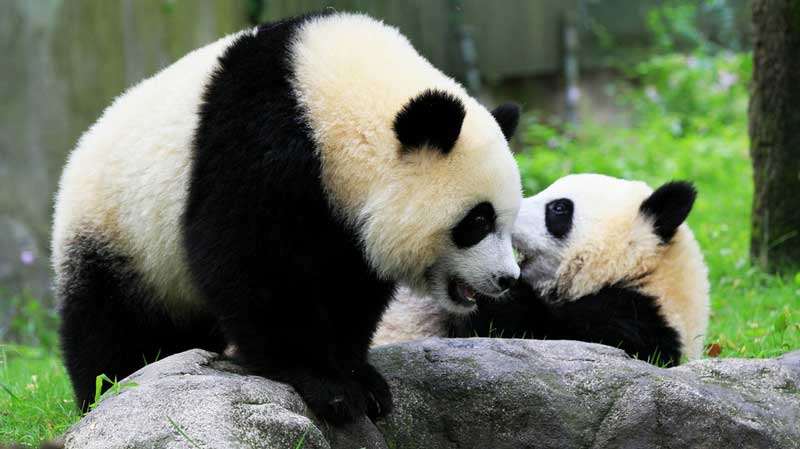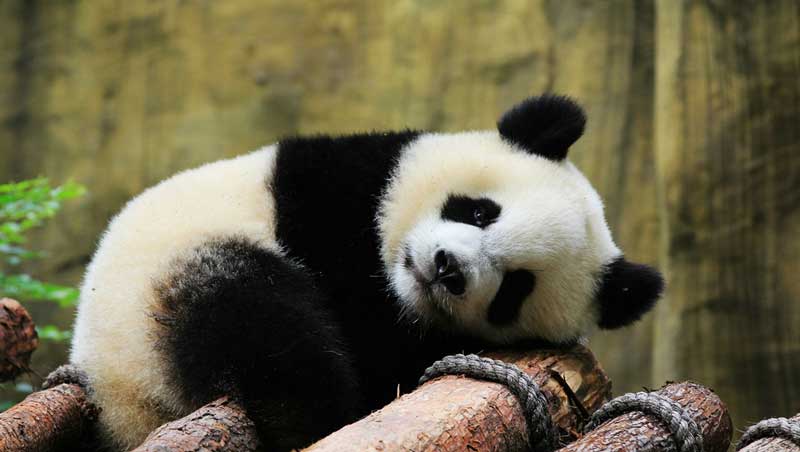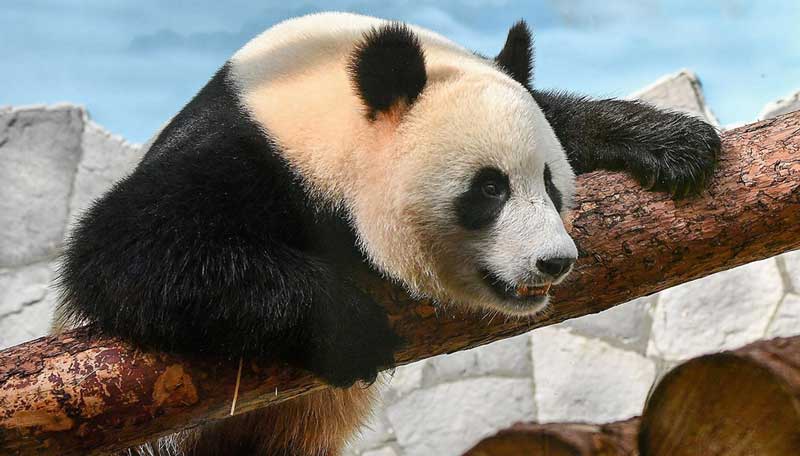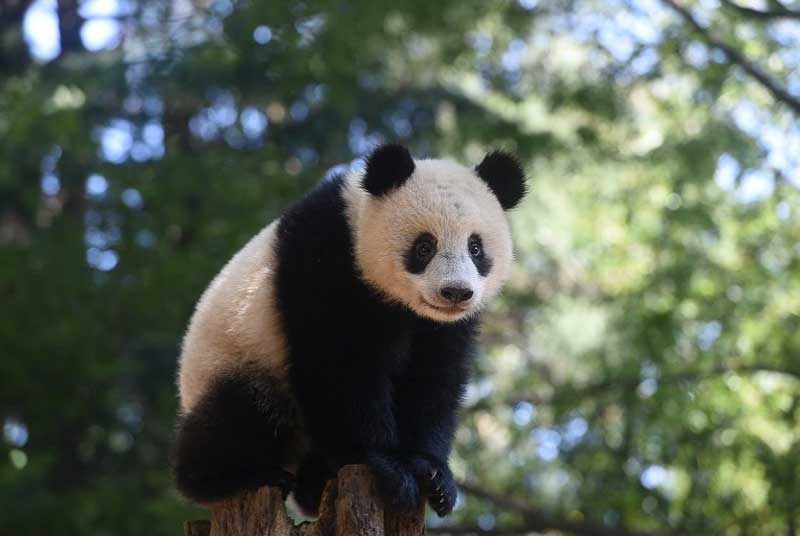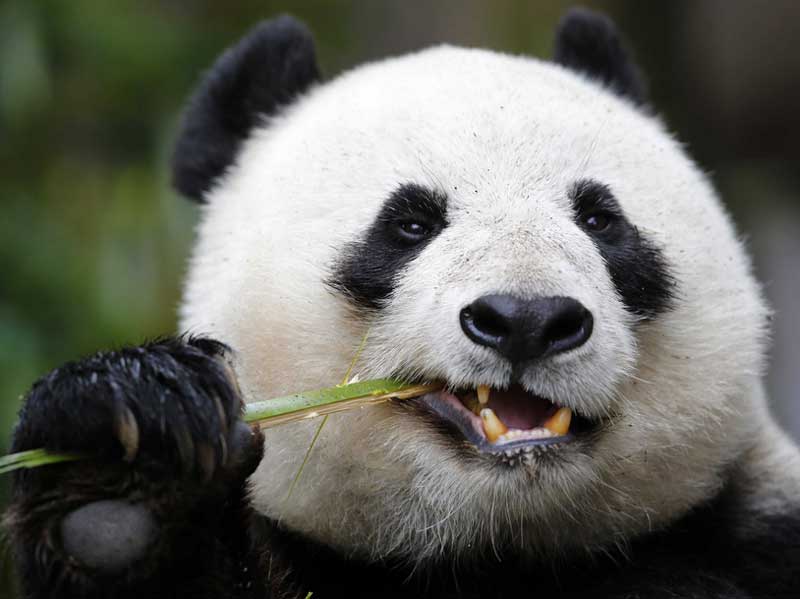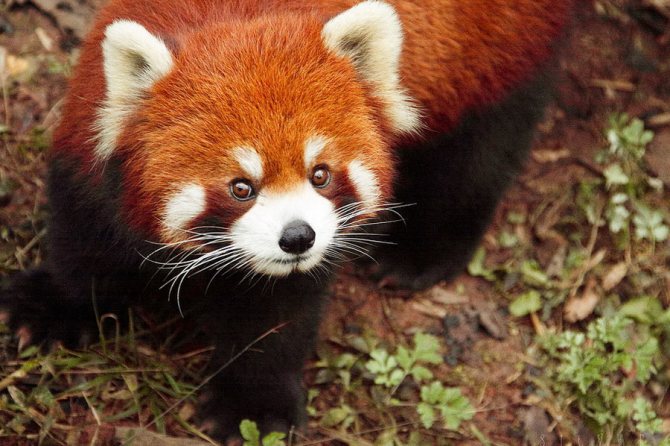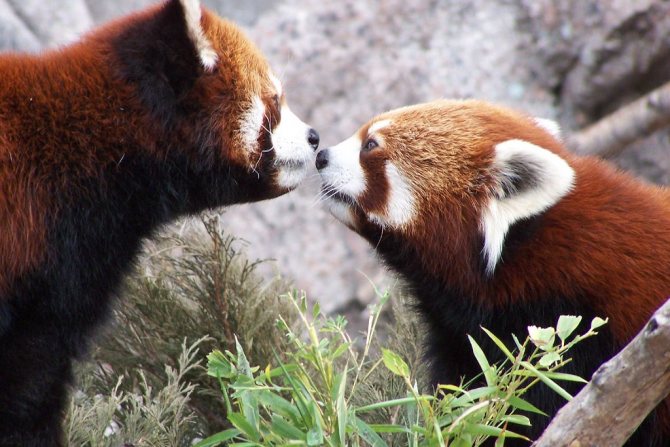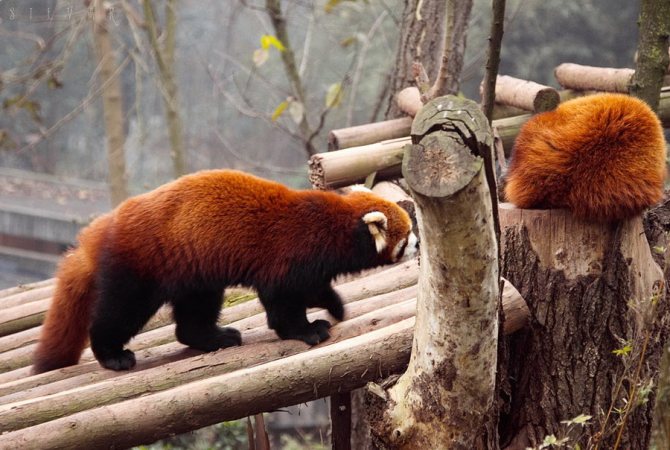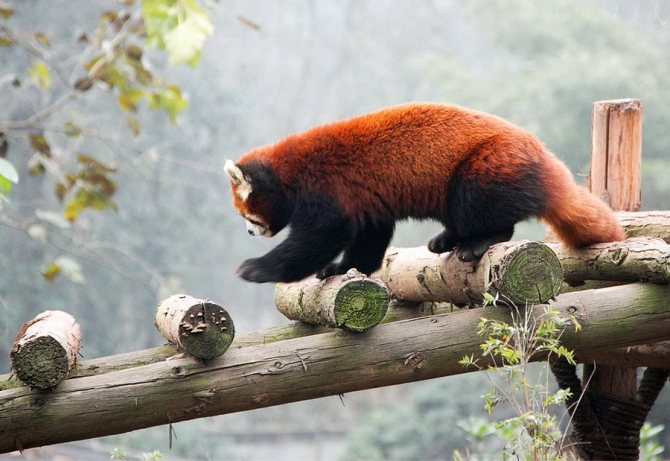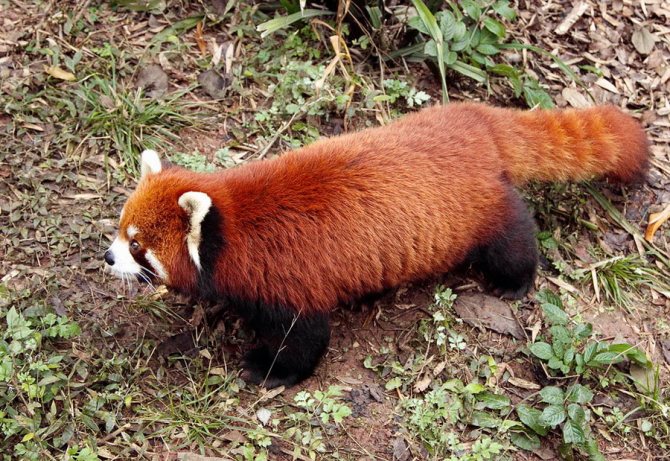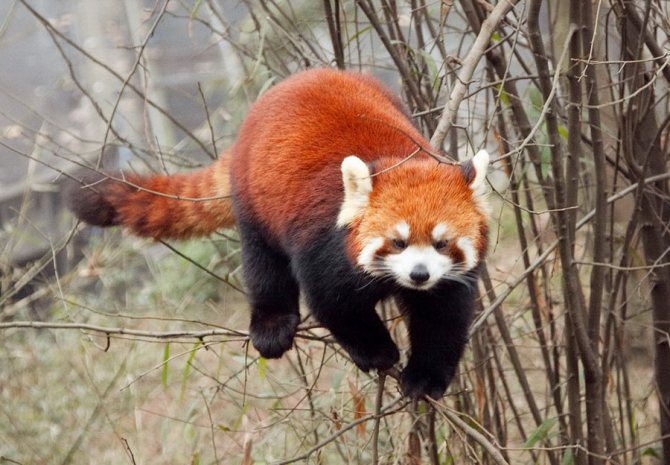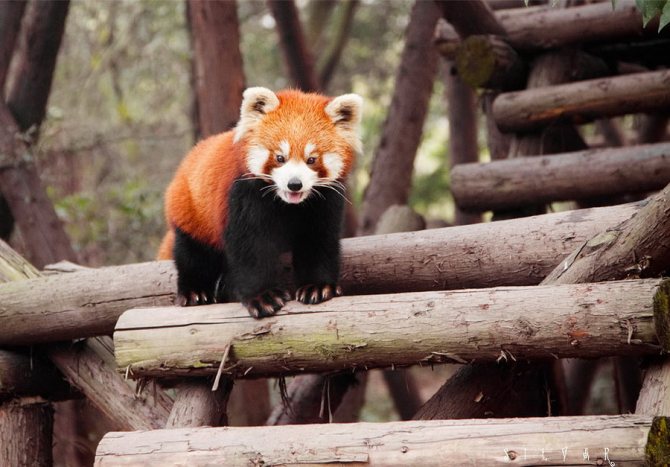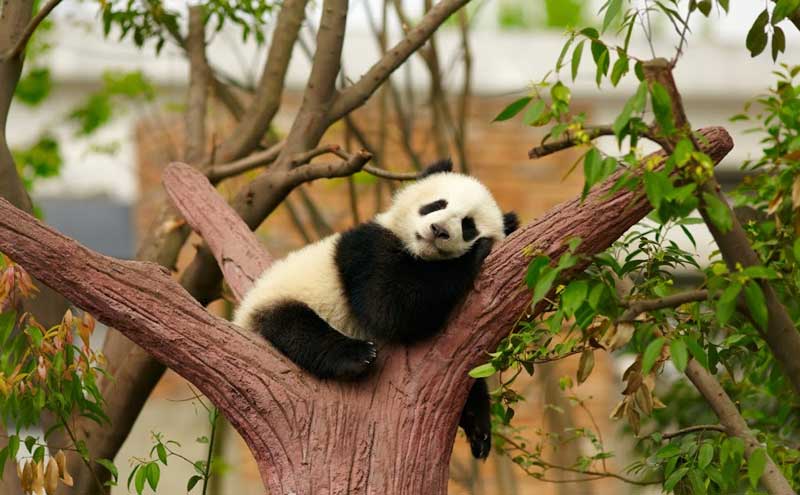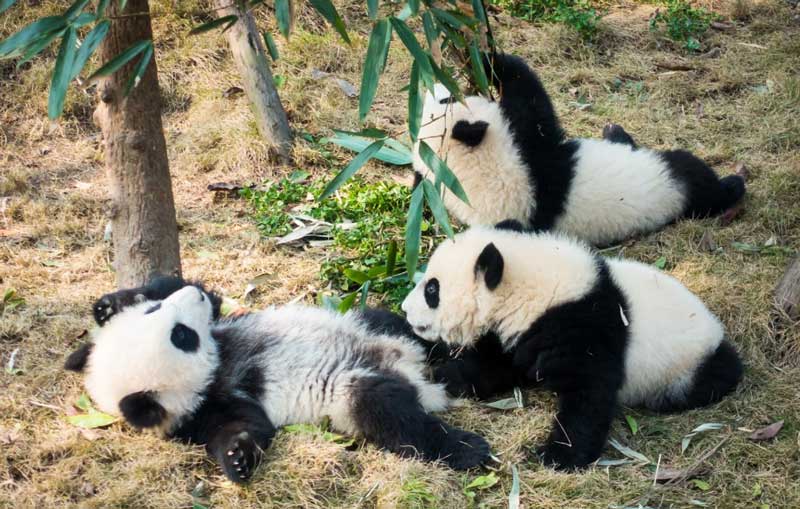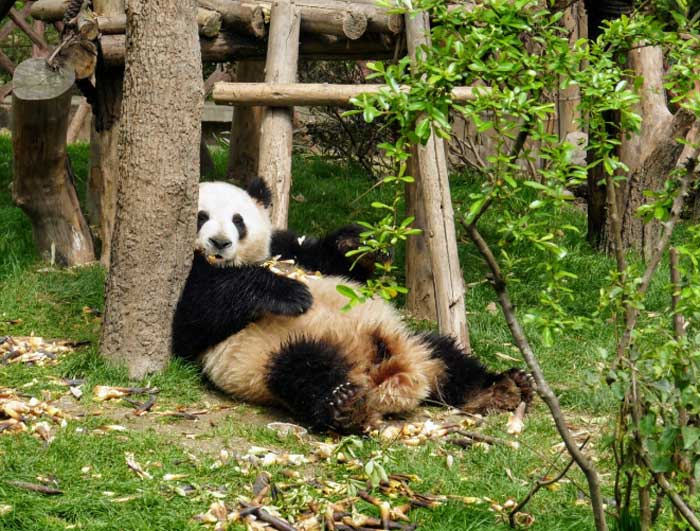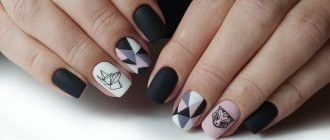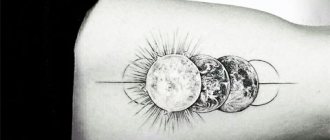What does the panda mean as a symbol in culture and art?
It is known that China already many centuries ago gave pandas to rulers of other countries as a symbol of friendship. This practice became widespread in the twentieth century and was even called "panda diplomacy". Thus this animal became a symbol of trust and compromise.
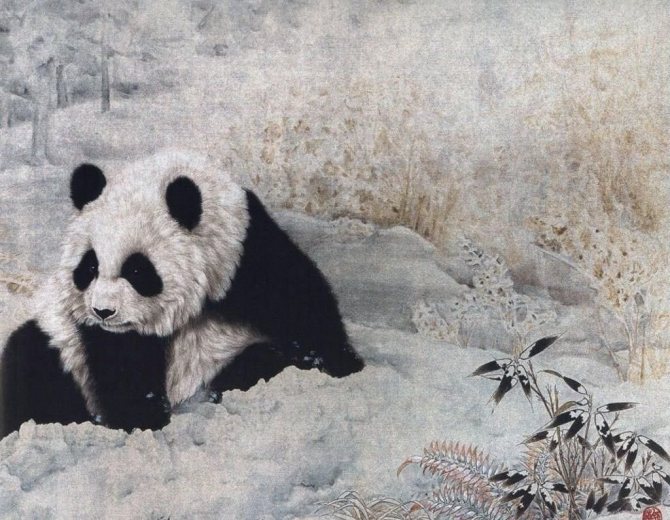
The panda has long been an instrument of diplomacy in China and a symbol of friendship and good neighborliness.
Although pandas are omnivores, they eat almost exclusively bamboo. Previously, they were generally believed to be strict vegetarians. Therefore, the panda has often become a symbol of the vegetarian movement. In addition, the great panda is the official symbol of the World Wildlife Fund (WWF).


Official symbol of the World Wildlife Fund.
The great panda is a popular character in traditional Chinese painting. It is not uncommon for pandas to be depicted in Japan as well. In both cases, pandas symbolized trust, gentleness and harmony, the attainment of which has always been highly valued in Eastern religions and cultures.
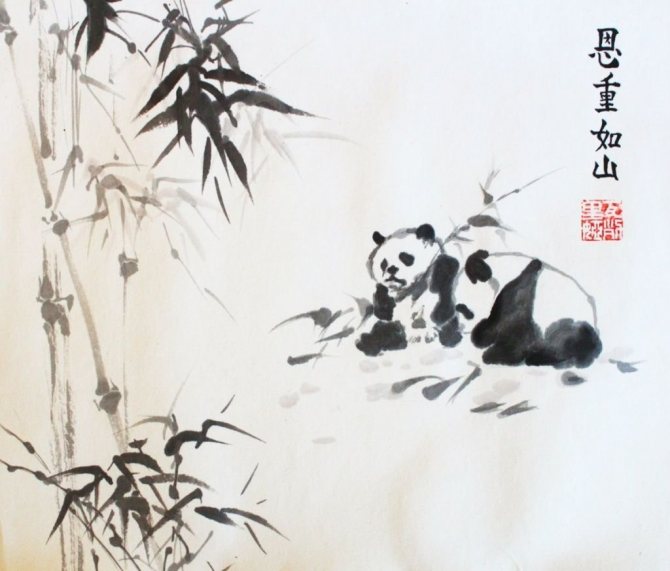

Pandas were one of the favorite themes in Chinese painting.
In China, the panda has even been called "the hermit of the bamboo grove. This is a very meaningful definition, because hermits in China were not only called lonely ascetics, but also scientists, calligraphers, painters and poets who preferred to find inspiration in the midst of the beauty of Nature. Thus, in Taoism and Confucianism, the panda symbolized the independent life of an extraordinary individual.


In ancient times, the Chinese called pandas the Hermits of the bamboo groves.
In addition, the ancient Chinese called the great panda the most noble of all the animals of the Celestial Empire. Interestingly, this idea of the panda was already quite transformed, because in the earliest annals of China the panda was perceived as a fearless predator and only later was it seen as a symbol of peacemaking and good neighborliness.
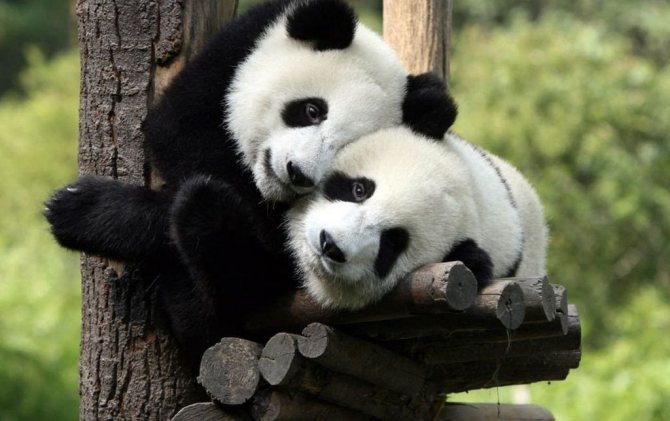

It is hard to believe that the Chinese once thought of the panda as a ferocious predator.
Pisu - the most feared animal of ancient China
However, ideas about the panda were constantly changing. The first references to this animal were about four thousand years ago.
For example, this peaceful creature was initially considered a ferocious predator and was called pisu (貔貅). The first of the hieroglyphs meant "ferocious male animal" and the second "ferocious female animal.
The first hieroglyphs meant "ferocious male animal" and the second meant "fierce female animal".
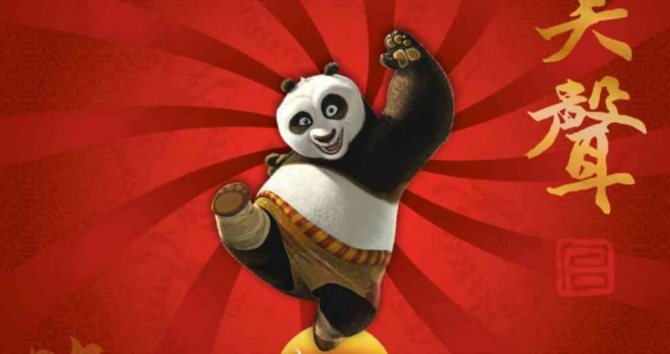

The panda was a symbol of bravery and martial arts. The court historian and courtier Sima Qian (145-190 BC) wrote that the legendary "yellow emperor" Shi Huang-di could defeat his rival Yan-di by using specially trained fighting animals, among which were pandas along with tigers and leopards. According to legend, when choosing animals for battle, pandas were doubted at first - they were too conspicuous because of their color, but when, on the advice of Tibetan sages they were still used, the panda brought victory.
The geographical treatise Shanghaiqing (catalog of mountains and seas), described the Celestial Empire and neighboring lands. In these descriptions, reality was mixed with conjecture and myth. There was a place for the panda, which was thought to be a fierce, sharp-toothed beast that ate iron and copper.
Perhaps the myth of pandas eating iron and copper was due to the fact that peasants found pandas eating leftover food from metal utensils. Also, perhaps such a statement emphasized the power and sharpness of the jaws of this bear. By the way, its jaws are really quite powerful, because pandas have to chew quite tough bamboo.
At the court of Emperor Wu-di of the Han dynasty (156-87 BC), pandas were kept for aristocratic hunting. It was believed that by shooting even one panda, the emperor demonstrated his courage by defeating the fearsome beast pisu!
Panda fur was also considered a valuable gift worthy of the emperor.
What does the panda mean as a tattoo symbol?
As a tattoo, the panda is not too common. In any case, it is noticeably inferior in popularity to cats, leopards, wolves and similar animals. Most often such a tattoo can be seen at inhabitants of Asia (China, Japan, Korea) and natives of this region. Quite often pandas on the body can be seen in Europeans and inhabitants of the former Soviet Union. In America such a tattoo is almost not met, except for all those ethnic Chinese and sometimes Japanese. Details about this can be read in the article panda tattoo that means in men and women.
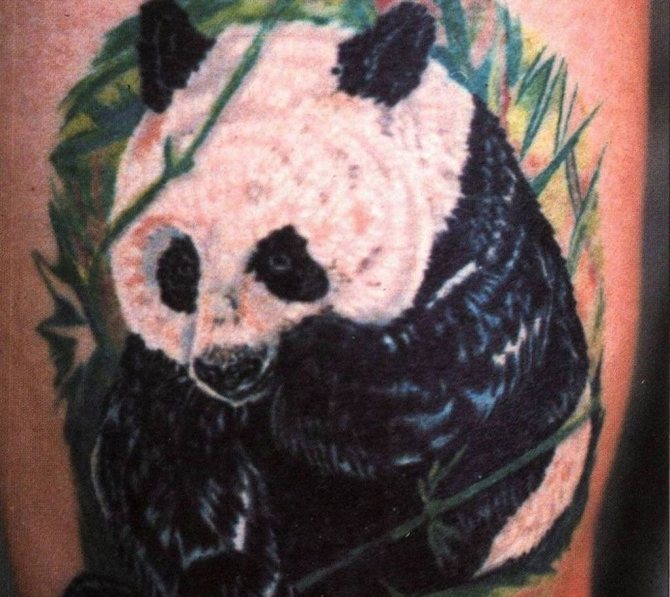

As a rule, tattoos with pandas are preferred by Asians and anime people.
To say that the panda tattoo has a clear meaning, it is impossible. But some well-established symbolism for such a tattoo still entrenched. For example, the panda is often worn on the body by devotees of oriental culture and eastern religions due to the fact that the great panda is considered one of the official symbols of China. Therefore, this animal is often depicted together with hieroglyphs, bamboo, sakura or lotus.
In addition, this symbol is applied to the body of people concerned about the sad state of nature and the systematic destruction of more and more living creatures. Most often, tattoos with such meaning do in the West. Sometimes the panda tattoo means longing for childhood and the ease of being, which is explained by the fact that the panda has entrenched the reputation of "yummy", "mimicry" animal. In general, we can say that, regardless of the specific meaning, tattoos in the form of a panda means peace, peacefulness, a bright perception of the world and gentleness.
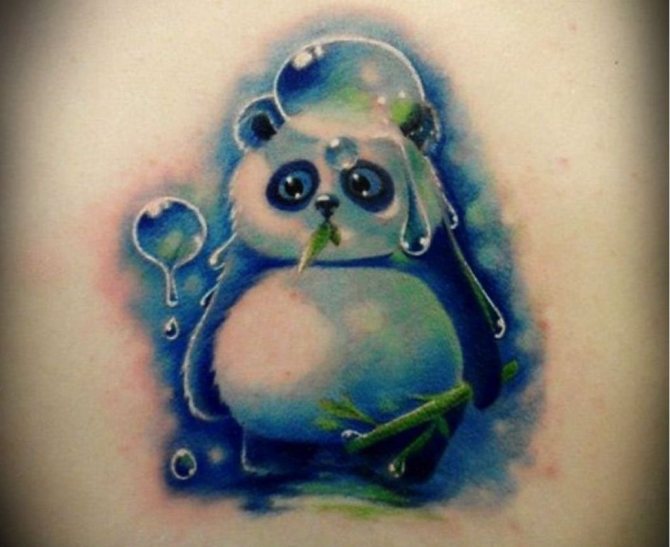

Tattoo in the form of a panda can symbolize child carefree.
Panda: Meaning in Psychology and Dream Books
In terms of psychology, the panda as a symbol means serenity, peacefulness and desire for peace. At the same time, it is also associated with a certain defenselessness. If a person dreams of a panda, it can be interpreted differently, because in our culture there is no clearly enshrined meaning of the pandas. But in general it indicates the same desire for peace, a thirst for warmth and mental relaxation.
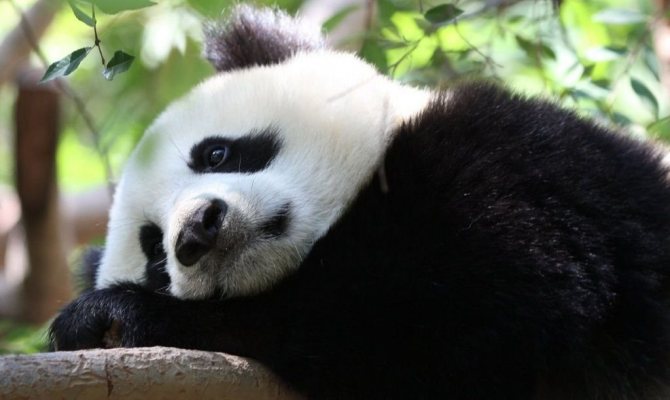

Panda coming in a dream promises only good.
If you turn to the dream books, the meaning of the panda is not too different from what psychologists say. A dream with a panda promises that the sleeper expects the end of labor and rest. Also, the panda can mean stability in many different spheres of life. And it can be not just peace of mind, but also the smooth formation of favorable conditions for new beginnings. Since the panda represents the bear family, it can, in a dream, indicate the appearance of serious people in life. And as this animal is exotic to our latitudes, it can also indicate that these people will be either foreigners, or something brightly stand out from the crowd. Meanings of the dream panda can be very diverse, but in general they all have a positive character, although with a tinge of calm and some defenselessness.
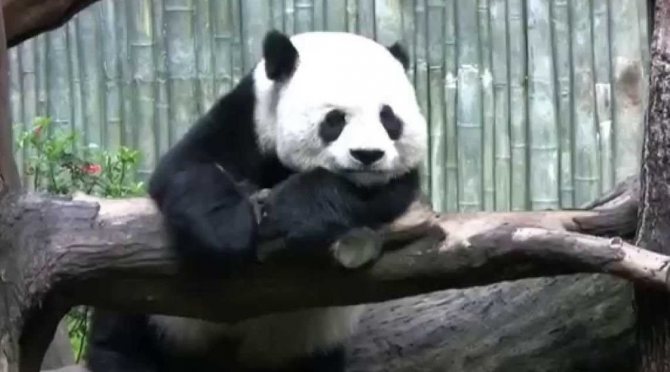

Dreaming of a panda can be a harbinger of interesting encounters.
Visit to Chengdu Nature Reserve
The panda zoo in China is the most visited attraction in Sichuan. The 200-hectare territory has all the conditions for the comfortable life and breeding of the bamboo bear. The center was opened in 1987 specifically for 6 rescued animals that were threatened with imminent death due to deforestation. In 30 years, the number of inhabitants has increased to 90 individuals. Impressive achievements, considering the pandas' natural laziness and low sexual activity.
Interesting on the site Chinese Calligraphy - the four jewels
The reserve is only 10 kilometers from China's largest metropolis, Chengdu, in Sichuan province, just off the central ring road. There are several regular bus routes from the city to here (north bus station). The fare does not exceed 2 yuan (19 rubles). If you're not satisfied with public transportation you can take a cab, which costs about 25 yuan (230 rubles) if driving from the city center. Entrance to the reserve is paid - 30 yuans (280 rubles) for 3 hours detailed excursion.
Here visitors will be told all about the giant pandas, offered to visit the museum, feed and even cuddle with the animals. However, for the close contact will have to pay an additional fee of $350 (in RMB at the exchange rate). But even this cost does not eliminate certain difficulties. You must sign up for cuddles in advance, on the official website or by phone. No more than 20 people per day are allowed to have direct contact - the pandas' morale is much more important to the center's staff than making a profit. If the cute bear doesn't want to cuddle, no one will force him or her, and, in fact, no one will return the money. In return, the visitor receives a certificate confirming the contribution of funds for charitable purposes (the reserve buys up the neighboring land to expand the territory), a super cute photo and vivid impressions for a lifetime.

